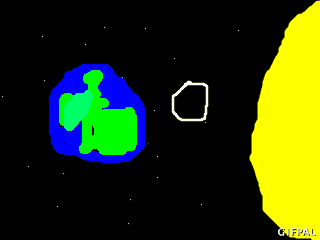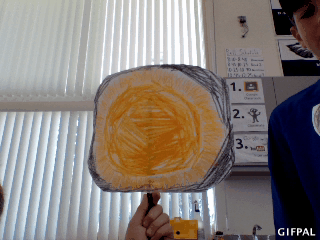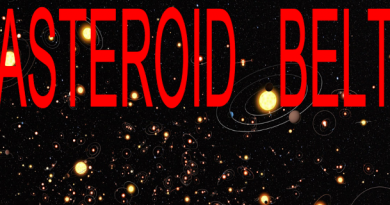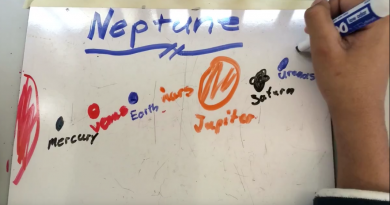Earth Sun Moon GIFs
Objective:
Create a model of a specific type of motion within the Earth-sun-moon system
NGSS Standards:
MS-ESS1-1 Develop and use a model of the Earth-sun-moon system to describe the cyclic patterns of lunar phases, eclipses of the sun and moon, and seasons.
Overview of Lesson:
This assignment was one of the culminating activities of our study on space. Students had already done activities about seasons, gravity, phases of the moon, etc. I wanted students to have the autonomy to choose a topic that interested them and to model it. The NGSS standards clearly want students to build a model so the opportunity to use dynamic GIFs rather than static dioramas seemed appropriate. Students worked on this at their own pace and completed it in 2-10 class periods. Students were allowed to work in groups, although the larger groups definitely had more conflicts and generally produced poorer work.
To create the GIF, there are numerous sites online that will string together images. Many of the students chose to use Piskel which is a sprite builder that allows you to create pixelated animations. This is definitely an activity that the teacher does not need to know more than the students about the technology. Once a few students started using Piskel, I made those students the class masters and referred any questions from other students to them. My roles as a teacher here was to make sure the science was actually being communicated in the diagram. Several students/groups went off on a tangent or didn’t fully understand the project and ended up with inaccurate or minimal projects. For the final sharing of the projects, I created a Google Doc with all the embedded GIFs and published it to the web for parents to access (link here: goo.gl/6V0WVc ). I could have also shared the projects in a Google Photo album but I liked being able to group the GIFs by topic.
Areas that students needed help on:
The most difficult part of this project for my students was submitting the GIF file to me. Downloading and uploading files is a skill that is best learned and practiced in practical settings like this. I think a lot of this stems from the fact that students understand what it really means to download a file and cannot visualize it as being on their physical computer as opposed to their Google Drive in the cloud. Regardless, this is a good lesson for students to practice so the time I spent going over this with students was worth it.
Assessment/Scoring:
The GIF was scored on a rubric for Exceeding expectations, Proficient (the science was clear), Partial (missing science or sloppy), Below (major errors or did not follow instructions). Some students definitely put in more effort than others so I did want to have a way to recognize the students who put forth the extra effort as opposed to just using the same images of the moon. To extend this project, the quiz for this unit included an essay question of “Provide a scientific explanation of your GIF”. This was where I really wanted students to connect their learning and be able to explain scientifically what was happening in the diagram they created. My grading on this question went back to the standard to make sure they identified and explained the cyclic patterns in our system.
Student samples:
Link to all student work: goo.gl/6V0WVc
Conclusions/Reflections for the Future:
Overall I’m pretty happy with this assignment. The students enjoyed it and for the most part gained something from going through the process of creating their GIF. I’d like to push the students a bit more in the future to go beyond the standard proficient score and into the exceeds category. That may mean being more firm on my grading or having a rubric that separates the science content from the creative effort in the final project.




